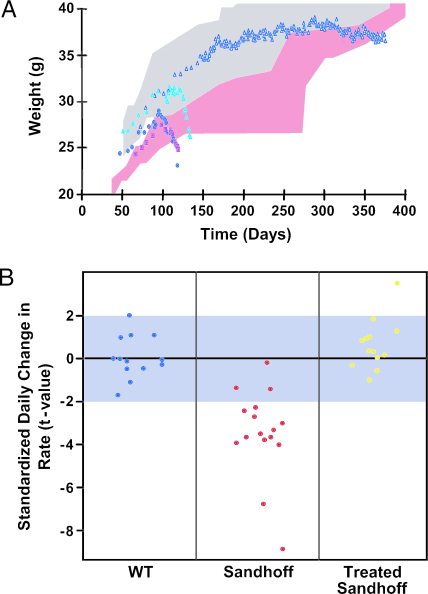Fig. 4.
Survival, weight, and neurological function after gene therapy in Sandhoff mice. Weight and rescue of neurological function was assessed in wild-type, untransduced, and transduced Sandhoff mice. Transduced animals were injected at 4 weeks of age. (A) Range of body weights in wild-type mice [blue-gray and pink stippled area for males (n = 6) and females (n = 7), respectively], untransduced (cyan triangles; n = 1) and rAAVα-transduced (dark blue squares; n = 1) Sandhoff males, untransduced (pink squares; n = 5) Sandhoff females, and rAAV2/2β or rAAV2/1β-transduced Sandhoff males at four sites (open dark blue triangles; n = 3). After therapy, Sandhoff mice gained and maintained their weight normally. (B) Effect of therapy on hind-limb movements in WT, untransduced or rAAVα-transduced Sandhoff animals (Sandhoff), and Sandhoff mice after transduction with either rAAV2/2β, rAAV2/1β, or rAAV2/2α+β (Treated Sandhoff). Each dot represents a single animal. Over 120 days, movement frequency declined in Sandhoff mice (P = 0.0108) but, in treated Sandhoff animals, remained indistinguishable from WT (P = 0.1107); limb movements improved significantly after gene therapy (P < 0.0001).

